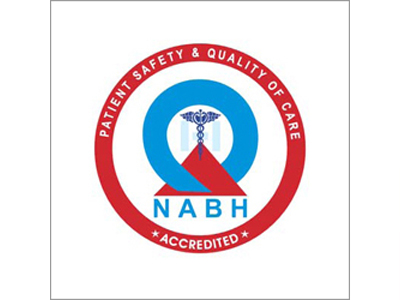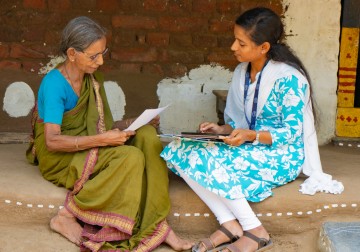In a new study at LVPEI, Debananda Padhy, Dr. Rohit C. Khanna, Dr. Srinivas Marmamula, and others report on the 15-year incidence rate of presbyopia in the Andhra Pradesh Eye Disease Study (APEDS) cohort at nearly 50.9% (or 3-4% every year).
Presbyopia is a condition where the eyes gradually lose their ability to see things up close. The transparent, flexible lens of our eyes can alter its shape to focus on objects at different distances. But as we age, it becomes less flexible, making it harder to focus on near objects. The onset of presbyopia is commonly seen in people in their late 30s and early 40s. In fact, 25% of people aged 30 or older have presbyopia. Presbyopia can be easily treated with an inexpensive pair of corrective spectacles. Yet, half of the 1.8 billion people with this condition do not have optical correction—a problem that disproportionately affects developing nations. Lack of data on presbyopia makes it a challenge to address this public health problem. For instance, the estimated prevalence of uncorrected presbyopia in Southern India has been shown to be 33% from a study in Andhra Pradesh and Telangana. Data on the incidence of presbyopia is even rarer.
The Andhra Pradesh Eye Disease Study (APEDS) was a large-scale, population-based longitudinal study on vision loss and eye diseases by LVPEI in the Indian states of Telangana and Andhra Pradesh. The latest APEDS (APEDS III, 2012-2016) provides 15-year follow-up data on patients from APEDS I (1996-2000). With data collected at two time points, 15 years apart, APEDS offers the opportunity to assess the incidence of presbyopia in this population.
In a new study published in The British Journal of Ophthalmology, Debananda Padhy, Dr. Rohit C. Khanna, Dr. Srinivas Marmamula, and others report just that: the 15-year incidence rate of presbyopia in the APEDS cohort. APEDS III included 5,395 of the original 10,293 participants from APEDS I. More than half (55.2%) of the participants were women. Their presenting visual acuity was measured for both distance (at 3 m) and near vision (at 40 cm) using logMAR charts. Other details about the participants, such as a history of diabetes and hypertension, were also recorded.
The 15-year cumulative incidence was estimated at 50.9% in those 16 years and above at baseline (that is APEDS 1). So, about half this cohort are likely to develop incident presbyopia over 15 years, translating to 3-4% new cases of presbyopia every year. The researchers also found that age (30s and 40s), lack of education (either no formal education or just primary schooling), and hypertension were the biggest risk factors for presbyopia. This is interesting, as those with higher education were likely to be myopic, that is, have distance vision loss, and so have a lower risk for near vision loss/presbyopia. All in all, the study reveals a high incidence of presbyopia in Andhra Pradesh and Telangana—a condition that is likely across South India—underscoring the necessity of primary eye care facilities and large-scale spectacle access initiatives.
'This 15-year longitudinal analysis provides robust evidence of the high incidence of presbyopia in South India, highlighting the urgent need for integrating near-vision correction into primary eye care strategies,' says Dr. Rohit C. Khanna, Network Director for Public Health at LVPEI and the corresponding author of this study.
Citation
Padhy, D., Khanna, R. C., Marmamula, S., Mettla, A. L., Giridhar, P., Banerjee, S., Konegari, S., Chakrabarti, S., Murthy, G. V. S., Gilbert, C. E., & Rao, G. N. (2025). Fifteen-year incidence of presbyopia in south India: the Andhra Pradesh Eye Disease Study. The British Journal of Ophthalmology, bjo-2024-326577. Advance online publication. https://doi.org/10.1136/bjo-2024-326577
Photo credit: LEADS project, Srinivas Marmamula.



